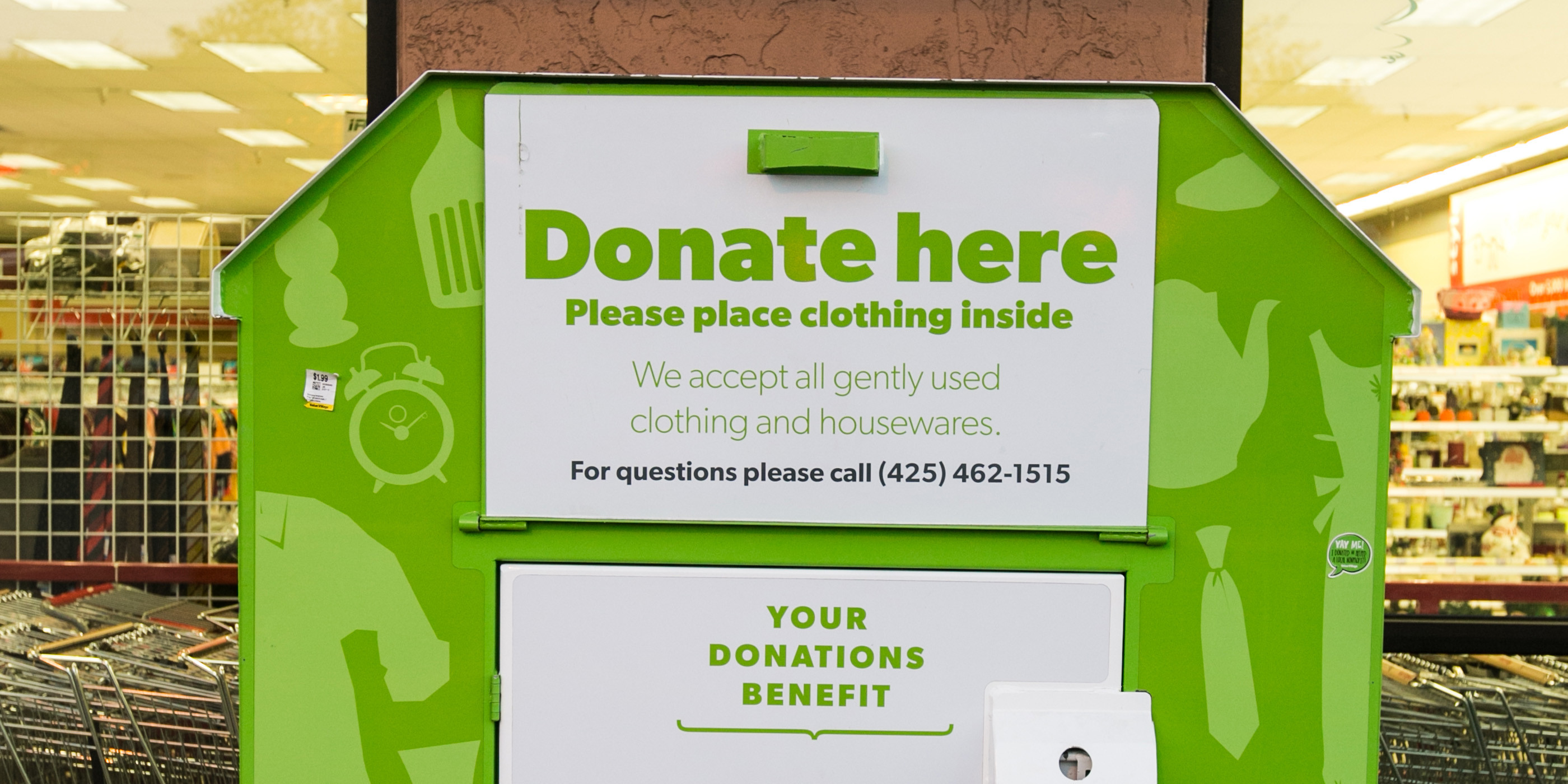Dropping off a bag of used clothes at a thrift shop can be a great way to support local charity if you’re smart about it. That’s because pound for pound, your donation typically doesn’t go nearly as far at a for-profit thrift store, even one with local nonprofit partners, as it does at a store operated by a charity.
Imagine you’re giving to a charity, only to discover that the organization you thought you were supporting gets less than a dime of every dollar your donation is worth — and a for-profit operation got the rest. It’s a daily occurrence, charity watchdogs warn consumers.
That’s backed up by an InvestigateWest analysis published in October estimating that as little as 8 percent of revenue goes to charity at the largest for-profit thrift chain, Value Village, and its corporate parent, Savers, Inc., neither of which shares that information with donors. Also, a report this month by the California Attorney General’s Office states that last year the amount paid to charities by for-profit thrift stores that purchase goods from charities, like Value Village and Savers, dropped from 13.2 percent to 9.5 percent.
For-profit thrifts stores “should be clearly articulating the amount that is actually going to the charity and clearly telling donors where the rest is going,” said Kris Kewitsch, director of the Minnesota-based Charities Review Council.
Drop your goods off at a store or get them picked up by a truck, but always ask these four questions, experts suggest:
- Is the thrift store for-profit or non-profit?
- Which charity will benefit?
- What percentage of my donation will the charity receive?
- How much money will the fundraiser keep?
Even small donations add up. Taxpayers give away billions of dollars annually in used clothing, housewares, toys, jewelry, and other goods. In 2010, according to the IRS, clothing donations alone were valued at $8.3 billion and housewares at $3.3 billion. Among what the IRS calls “noncash contributions,” only corporate stock donations were valued higher than donations of used goods. The number of taxpayers reporting these donations is increasing. They show up on millions of tax returns.
David Quinlan of the Better Business Bureau advises donors to “give directly to a charity to avoid any confusion about where your donation is going or to avoid some third party taking part of it.”
More advice from charity watchdogs:
- Under federal law, fundraisers aren’t required to tell you what percentage goes to the charity, but they are required to tell you if you ask. If you get a phone call asking for for your “gently used” goods or a solicitation in the mail, you have a right to ask and get an answer.
- If you don’t, file a complaint with the charities or consumer affairs division of your state, often housed in the office of the secretary of state or the state attorney general. The Minnesota attorney general’s office wouldn’t have undertaken a major investigation of for-profit thrift store Savers had the office not been prompted by many calls and complaints from consumers.
- Report violations of the Do Not Call list, as well as confusing, deceptive or misleading telemarketing phone calls, to the Federal Trade Commission. In recent years, the FTC has received more than 1,000 complaints about thrift giant Savers, according to public records.
- Beware of scammers. The FTC offers advice on this.
- Don’t assume that all thrift stores are run for a charitable purpose, even if they claim to have some affiliation with a charity. “While the name of the store may identify the charitable affiliation, charity-sounding names have been used by for-profit stores with no connection to charity,” writes the Better Business Bureau. Even stores with bona fide connections to charities may be giving a lot less to them than you might expect.
- Verify that you are giving to the charity you think you are. “Some charity names sound alike. Be careful that the one soliciting you is the one you have in mind,” says the BBB.
- Encourage your state to adopt consumer protections such as those in a settlement agreement earlier this year between the Minnesota Attorney General’s Office and for-profit thrift store giant Savers, which called for the company to:
- Disclose it is a for-profit fundraising company, not a nonprofit.
- Segregate donations among the beneficiaries for which they were solicited, instead of comingling them.
- Pass along proceeds from non-clothing donations to the intended charities.
- Better disclose who benefits from the donations.
- Prominently display in stores what it pays to charities.
- Register as a professional fundraiser with the attorney general’s office and file an annual report.
More information on donating to charities is available from the Better Business Bureau, which also advises donors to ask whether a charity meets BBB’s Wise Giving Alliance’s Standards for Charity Accountability.
Robert McClure contributed to this report.
InvestigateWest thanks the Fund for Investigative Journalism for its generous support of this reporting project.



